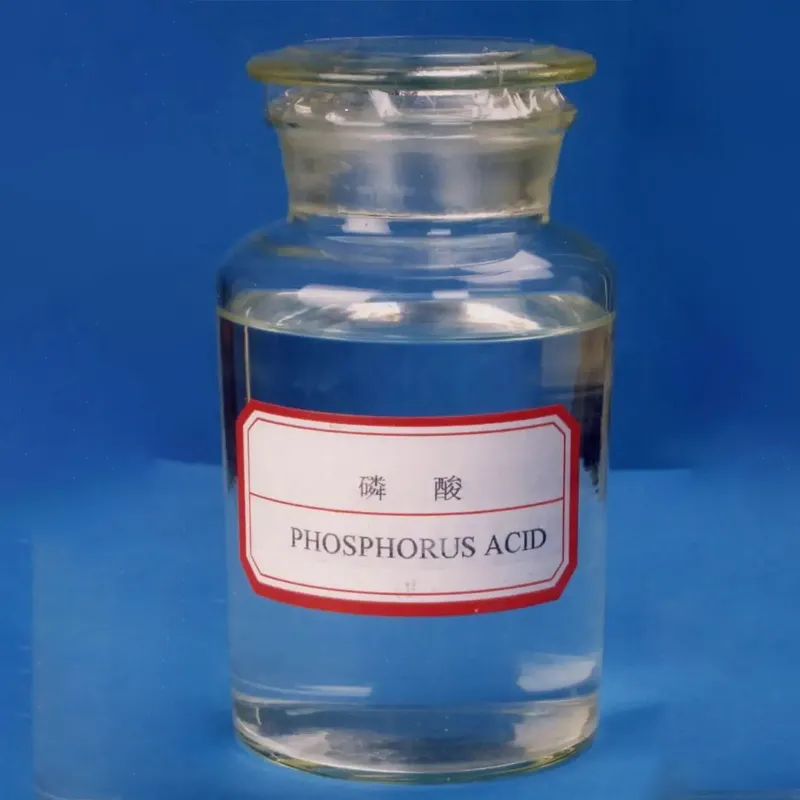
Understanding the Differences Between Acetic Acid and Glacial Acetic Acid
Understanding Acetic Acid and Glacial Acetic Acid Properties, Uses, and Differences
Acetic acid, known chemically as CH₃COOH, is an organic compound that plays a pivotal role in various industrial and laboratory processes. It is a colorless liquid with a distinct smell, often associated with vinegar when diluted. In terms of concentration, acetic acid can be found in two primary forms dilute acetic acid, commonly referred to as vinegar, and glacial acetic acid, which is a concentrated form with unique characteristics and applications.
Properties of Acetic Acid
At standard conditions, acetic acid is a weak acid, meaning it only partially dissociates in solution. Its pH typically ranges around 2 to 3 when diluted, making it acidic to the taste. The compound is miscible with water, ethanol, and ether, which allows it to blend easily in various solvents. The boiling point of acetic acid is approximately 118 degrees Celsius, while its freezing point is around 16.6 degrees Celsius. This unique property of solidification at relatively low temperatures gives rise to the term glacial when referring to highly concentrated acetic acid.
Glacial Acetic Acid Definition and Characteristics
Glacial acetic acid maintains an acetic acid content of 99% or higher. This concentrated form is much more potent than its diluted counterpart. The term glacial originates from its appearance at lower temperatures, where it takes on a crystalline structure resembling ice. When handled improperly, glacial acetic acid can pose significant hazards; it is corrosive to skin, eyes, and respiratory systems, necessitating stringent safety precautions during use.
Because of its high purity, glacial acetic acid is prized in industry and research. It serves as a key raw material in the manufacturing of various chemical products, including acetic anhydride, acetate esters, and plasticizers. Furthermore, glacial acetic acid is essential in the synthesis of certain pharmaceuticals and food additives.
Uses of Acetic Acid
acetic acid and glacial acetic acid

The applications of acetic acid are diverse across various sectors. In the food industry, it is primarily used as a preservative and flavoring agent. Vinegar, which contains approximately 4-8% acetic acid, is a popular condiment and is utilized for pickling vegetables. Its antimicrobial properties help inhibit the growth of bacteria, ensuring food safety and extending shelf life.
In the chemical industry, acetic acid acts as a solvent and a precursor for an array of compounds. It is a fundamental ingredient in the production of plastics, synthetic fibers, and other materials. Acetate-based compounds derived from acetic acid find applications in various products such as paints, coatings, and adhesives due to their favorable properties.
Additionally, acetic acid plays an instrumental role in the laboratory, serving as a reagent in various chemical reactions. It is employed in synthesizing chemical compounds and purifying substances through processes like crystallization and distillation.
Distinctions Between Acetic Acid and Glacial Acetic Acid
Despite sharing the same chemical identity, the distinctions between dilute acetic acid and glacial acetic acid are significant. The primary difference lies in their concentration. While dilute acetic acid is safe for day-to-day consumption and handling, glacial acetic acid's strong acidity requires specialized storage and careful handling.
Furthermore, their physical characteristics vary; dilute acetic acid remains a clear liquid at room temperature, while glacial acetic acid may form ice-like crystals when chilled. This property is crucial for laboratory applications where precision in concentration and reactions is required.
Conclusion
Acetic acid and glacial acetic acid are fundamental chemical compounds with a broad range of applications spanning from the culinary world to industrial processes. Understanding their properties, uses, and differences is crucial for anyone working with these chemicals, whether in scientific research, manufacturing, or food production. As industries continue to innovate and expand, the significance of acetic acid in various applications will only grow, underscoring the importance of safety and knowledge when dealing with chemicals in concentrated forms. Proper handling and awareness of their characteristics remain essential for maximizing their benefits while minimizing risks.
-
Pure Sodium Dichloroisocyanurate Dihydrate | Powerful DisinfectantNewsAug.29,2025
-
Industrial Chemicals: Quality & Purity for Every IndustryNewsAug.28,2025
-
Nitrile Rubber Honoring Strict Production StandardsNewsAug.22,2025
-
Aspartame Ingredients Honoring Food Safety ValuesNewsAug.22,2025
-
Fertilizer for Balanced Plant NutritionNewsAug.22,2025
-
Cyanide Gold Processing with High Purity AdditivesNewsAug.22,2025
-
Formic Acid in Textile Dyeing ApplicationsNewsAug.22,2025
Hebei Tenger Chemical Technology Co., Ltd. focuses on the chemical industry and is committed to the export service of chemical raw materials.
-

view more DiethanolisopropanolamineIn the ever-growing field of chemical solutions, diethanolisopropanolamine (DEIPA) stands out as a versatile and important compound. Due to its unique chemical structure and properties, DEIPA is of interest to various industries including construction, personal care, and agriculture. -

view more TriisopropanolamineTriisopropanolamine (TIPA) alkanol amine substance, is a kind of alcohol amine compound with amino and alcohol hydroxyl, and because of its molecules contains both amino and hydroxyl. -

view more Tetramethyl Thiuram DisulfideTetramethyl thiuram disulfide, also known as TMTD, is a white to light-yellow powder with a distinct sulfur-like odor. It is soluble in organic solvents such as benzene, acetone, and ethyl acetate, making it highly versatile for use in different formulations. TMTD is known for its excellent vulcanization acceleration properties, which makes it a key ingredient in the production of rubber products. Additionally, it acts as an effective fungicide and bactericide, making it valuable in agricultural applications. Its high purity and stability ensure consistent performance, making it a preferred choice for manufacturers across various industries.





